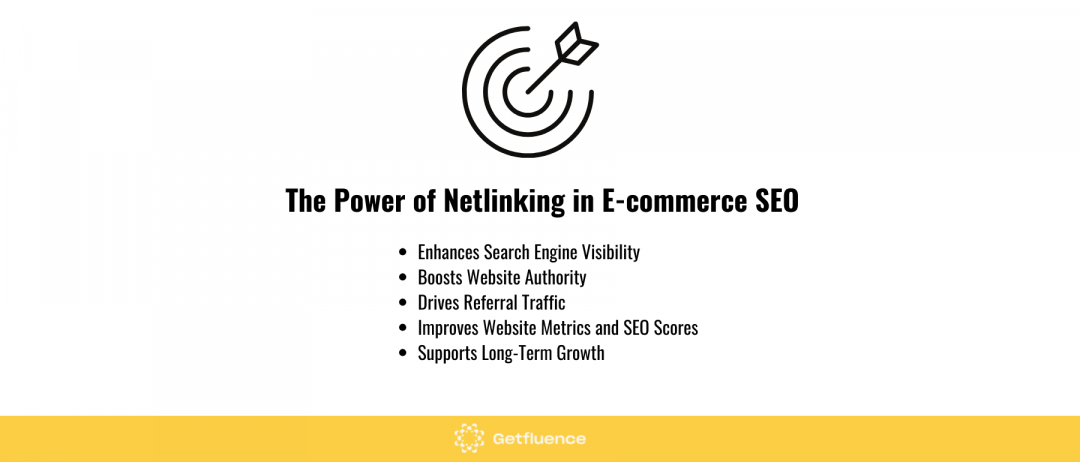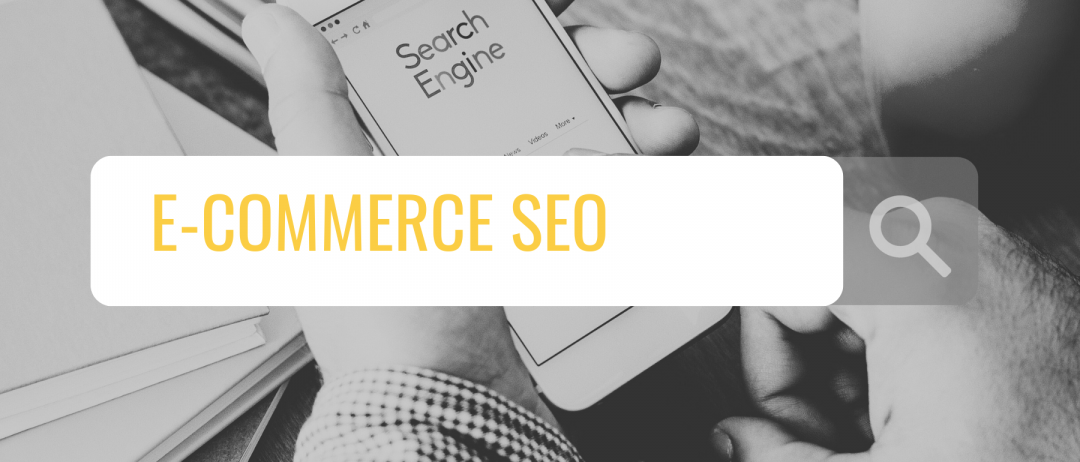- The Ever-Evolving E-commerce Landscape
- Understanding E-commerce SEO
- Optimizing Product Pages for Visibility
- Enhancing Category Pages for Better Navigation and SEO
- The Power of Netlinking in E-commerce SEO
- Conclusion
E-commerce SEO in 2024 is evolving, artificial intelligence (AI) has cemented its role as a cornerstone of online strategies.
And the arena of e-commerce SEO stands as a critical battleground for businesses vying for visibility and dominance.
As we delve into the intricacies of optimizing online stores, the question arises: why does e-commerce SEO matter more than ever in today’s AI-driven world?
E-commerce SEO, the art and science of making online stores more visible on search engine results pages.
The evolution isn’t just about keeping pace with algorithm updates. It’s about preempting the shifts in digital consumer behavior driven by AI’s integration into everyday life.
What makes e-commerce SEO indispensable? The direct correlation between search visibility and sales.
In a digital ecosystem where the majority of online shopping journeys begin with a search engine query, being prominently positioned on SERPs can significantly impact a business’s bottom line.
Optimized product pages and categories lead to better user experiences, higher engagement rates, and ultimately, increased conversions.
The Ever-Evolving E-commerce Landscape

The digital marketplace is a constantly shifting arena. With AI technologies becoming more ingrained in search engines and user experiences, e-commerce sites face the imperative challenge of not just adapting but excelling.
The optimization of product pages and categories isn’t merely about adhering to SEO best practices. Now it’s about creating a seamless, engaging online shopping experience.
In light of Google’s Search Generative Experience, optimizing product pages and categories becomes even more crucial.
Actionable tactics should focus on enriching product data and leveraging AI to offer personalized, contextually relevant content.
This includes enhancing visual elements, detailed product overviews, ensuring information structured in a way that aligns with generative AI.
Balancing these optimizations with user privacy considerations will be key in maximizing engagement and conversions in an evolving e-commerce landscape.
Understanding E-commerce SEO

E-commerce SEO is the process of optimizing online stores to rank higher in search engine results. With that we want to increase visibility and drive organic traffic to the site.
Historically, it has evolved from simple keyword stuffing to a complex strategy that includes on-page optimization, technical SEO, and content marketing.
The introduction of AI and machine learning in search algorithms has further shifted the focus towards user experience.
Today, strategic SEO is crucial for e-commerce success as it significantly boosts organic traffic and sales.
By targeting specific keywords, optimizing site structure, and creating valuable content, businesses can improve their search engine rankings, making it easier for potential customers to find them.
Keyword Research for Product Pages and Categories is important.

Keyword research for product pages and categories is pivotal because it aligns your offerings with the search queries of your target audience, improving visibility on search engines.
By identifying and integrating relevant, high-intent keywords, you can draw in more qualified traffic.
This strategic approach ensures that your products are easily discoverable by potential customers actively seeking what you offer.
To perform keyword research for product pages and categories, start by identifying your target audience’s search intent.
Search intent refers to the purpose behind a user’s query on a search engine.
It helps in understanding what the user is looking for.
Whether it’s information, a specific website, or a product to buy.
Identifying search intent is crucial for SEO as it guides content creation and keyword strategy.
And it ensures that the content matches what users are seeking.
There are typically four types of search intent: informational, navigational, transactional, and commercial.
Each defining a different stage in the user’s journey or goal.
Use tools like Google Keyword Planner, SEMrush, or Ahrefs to find relevant keywords with high search volume and low competition.
Analyze competitors to understand the keywords they’re targeting. Group these keywords by relevance to specific products or categories.
Incorporate these keywords naturally into product titles, descriptions, meta tags, and URLs.
Let’s make an example

Imagine a boutique furniture store specializing in vintage pieces, keen on attracting buyers for their “vintage blue leather couch.”
The journey begins with keyword research, revealing broad terms like “vintage couch” and “leather couch.”
However, digging deeper uncovers a gem: “buy vintage blue leather couch.”
This specific, long-tail keyword not only signifies a clear purchase intent but also perfectly matches the store’s offering.
Through on-page SEO and value-driven content marketing, the store should increase its online visibility.
But also traffic, and sales, establishing itself as a premier destination for vintage furniture enthusiasts.
And to boost these product pages they should need link building.
Why? Because focus on building high-quality backlinks from reputable sources within their niche i’ts fundamental.
They could utilize marketplaces like Getfluence to connect with digital media willing to publish sponsored articles, ensuring these backlinks are relevant and authoritative to boost the SEO performance.
Optimizing Product Pages for Visibility

When launching an e-commerce venture, the art of connection stands as a pivotal pillar for success.
Amidst an array of communication channels, SEO i’ts a vital conduit to reach and engage with your audience.
At the heart of SEO lies the essential task of optimizing product pages for visibility.
A task that, when executed skillfully, can significantly elevate your brand’s online presence.
In the realm of search engine results pages (SERPs), the battle for attention is fierce.
Here, meta tags and descriptions serve as your frontline warriors, crafting the first impression of your brand for potential customers.
These elements, though compact, hold immense power in swaying user decisions—prompting the click that bridges the gap between interest and engagement.
The Critical Role of Meta Tags and Descriptions

Meta titles and descriptions are more than mere snippets of text. They are strategic marketing messages that need to resonate with the searcher’s intent.
A well-optimized meta title, succinct and keyword-rich, signals relevance to search engines and searchers alike, guiding them towards your page amidst a sea of alternatives.
The meta description, though not a direct ranking factor, plays a crucial role in influencing click-through rates (CTR).
This brief yet potent paragraph is your opportunity to showcase the unique value proposition of your product or content. It’s where you make a compelling case for why a searcher should choose your link over countless others vying for their attention.
Crafting Click-Worthy Content
To captivate and convert, your meta tags must be meticulously crafted with precision and purpose.
Here are some insights into creating meta titles and descriptions that not only capture attention but compel action:
- Strategic Keyword Incorporation: Place relevant keywords towards the beginning of your meta title and description to ensure visibility and relevance. This strategic placement aligns with the user’s search intent, making your page a clear contender for their click.
- Action-Oriented Language: Employ verbs that inspire action—such as “Discover,” “Explore,” “Unveil,” or “Shop”—to instill a sense of urgency and intrigue. This language motivates users to dive deeper into what your page has to offer.
- Benefits and Solutions Spotlight: Highlight what users stand to gain by clicking through. Whether offering a solution to a pressing problem, an insight into a unique product feature, or an exclusive deal, your meta description should succinctly convey the value awaiting them.
- Clarity and Conciseness: With character limits in play (60 characters for titles and 150-160 for descriptions), brevity becomes your ally. Craft your messages to be clear and to the point, ensuring they are fully displayed in SERPs and immediately understood by your audience.
- A Call to Action: Conclude your meta description with a compelling call to action. Phrases like “Learn more,” “Experience the difference,” or “Start your journey” serve as open invitations for users to engage with your brand on a deeper level.
Enhancing Category Pages for Better Navigation and SEO
The organization of your category pages plays a significant role in this, acting as the roadmap that guides visitors through your site’s offerings while simultaneously signaling to search engines the relevance and authority of your content.
Here’s how to master the art of enhancing category pages for better navigation and SEO.
Category Page Structure: A Blueprint for Success

Think of your category pages as chapters in a book. Just as a well-organized table of contents can make a book more enjoyable to read, a well-structured category page can significantly improve the browsing experience.
This structure isn’t just about making it easier for your customers to find what they’re looking for; it’s also about making it easier for search engines to understand and rank your content.
A logical hierarchy, clear headings, and intuitive navigation are the cornerstones of an effective category page.
These elements help reduce bounce rates by ensuring that users find what they need quickly and efficiently.
Moreover, a well-planned category page structure can enhance your site’s SEO by grouping related products in a way that strengthens your site’s topical authority in the eyes of search engines.
Keyword Integration: Speaking the Language of Your Audience
Keywords are the bridge between what your potential customers are searching for and the content you’re offering on your site.
Integrating relevant keywords into your category descriptions and headers is crucial for aligning with your audience’s search intent.
This alignment not only improves the visibility of your category pages in search results but also enhances the user experience by reflecting the language and terms your customers use.
When incorporating keywords, focus on relevance and search volume. Use these terms naturally within category descriptions to describe the products or services offered.
This not only aids in SEO but also helps customers understand the range of items within a category, making it easier for them to navigate to the products they’re interested in.
Internal Linking Strategies: Weaving a Web of Connections
Internal linking is the unsung hero of SEO and user engagement. By linking related categories and products within your site, you create a network of pathways that guide users deeper into your site, encouraging exploration and interaction.
This not only improves the user experience but also boosts the page authority of linked pages, distributing page rank and relevance throughout your site.
Effective internal linking involves using descriptive anchor text that gives users and search engines clear signals about the content of the linked page.
This strategy not only enhances navigation but also strengthens the thematic connections between different sections of your site, improving its overall SEO performance.
Incorporating breadcrumbs is another powerful tactic in your internal linking arsenal.
Breadcrumbs provide a trail for users to follow back to higher-level categories, improving site navigation and reinforcing the hierarchical structure of your content in the eyes of search engines.
The Symphony of Structure, Language, and Connection
Enhancing category pages for better navigation and SEO is a symphony of structure, language, and connection.
By organizing category pages for ease of navigation, strategically integrating keywords, and employing savvy internal linking strategies, you can create a seamless user experience that both engages your audience and elevates your site’s search engine performance.
In doing so, you not only meet the immediate needs of your customers but also build a solid foundation for your site’s long-term SEO success.
The Power of Netlinking in E-commerce SEO

Netlinking, or the process of acquiring backlinks from other websites to your own, is akin to gathering digital endorsements.
Each backlink serves as a vote of confidence in the eyes of search engines, signaling that your content is valuable, credible, and worth ranking highly in search engine results pages (SERPs).
Understanding the Essence of Netlinking
Netlinking is not merely about accumulating a large number of links; it’s about securing quality backlinks that contribute to your site’s reputation and search visibility.
In the context of e-commerce, this means acquiring links that not only drive traffic but also enhance the perceived value and authority of your product and category pages.
The relevance of these backlinks is paramount; a link from a respected industry site or a related niche blog is infinitely more valuable than a random link from an unrelated domain.
Strategies for Acquiring High-Quality Backlinks
- Content Marketing: Create compelling, unique, and informative content that naturally attracts backlinks. This could include in-depth product reviews, how-to guides related to your products, or insightful industry analyses.
- Guest Blogging: Contribute articles to reputable blogs or industry websites in your niche. By providing valuable content to these platforms, you can include links back to your own product and category pages.
- Influencer Collaborations: Partner with influencers in your industry to create content or promotions that link back to your site. Influencers with a strong following in your niche can provide backlinks that are not only high in quality but also drive targeted traffic.
- Broken Link Building: Identify broken links on relevant websites and offer your content as a replacement. This method not only helps you gain a backlink but also assists the site owner in improving their user experience.
Leveraging Sponsored Content on marketplaces like Getfluence
One of the most effective strategies for acquiring quality backlinks in the e-commerce sector is through sponsored content on platforms like Getfluence.
Sponsored content allows you to publish articles, reviews, or features on influential media sites, blogs, or industry platforms, with links leading back to your product and category pages. This method offers several benefits:
- Targeted Exposure: Sponsored content places your brand in front of a relevant, engaged audience, increasing the likelihood of attracting traffic that converts.
- Enhanced SEO Performance: Backlinks from high-authority sites significantly boost your SEO, improving your rankings in SERPs and increasing your online visibility.
- Controlled Messaging: With sponsored content, you have control over the messaging and positioning of your brand, ensuring that the backlinks align with your marketing goals and SEO strategy.
- Building Brand Authority: Being featured on respected platforms enhances your brand’s credibility and authority in your industry, encouraging more organic backlinks over time.
Conclusion
We’ve delved into the importance of optimizing online stores for search engines, highlighting that visibility on search engine results pages (SERPs) directly influences sales.
The digital marketplace’s evolution demands a strategic approach to SEO, incorporating the optimization of product pages and categories to improve user experience and engagement, ultimately leading to increased conversions.
As we look toward the future, it’s evident that optimizing e-commerce sites for SEO is not just beneficial but essential for success in the digital age.
For those looking to amplify their e-commerce SEO efforts further, exploring sponsored content opportunities on platforms like Getfluence can be a game-changer.
Getfluence offers a seamless way to acquire quality backlinks through sponsored articles, significantly enhancing your SEO performance and online visibility.
Take action today and discover how Getfluence can elevate your e-commerce SEO strategy to new heights.





